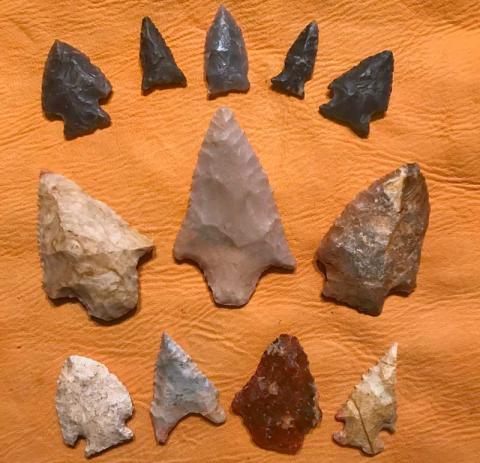
Written by Greg Kazmierski, Whitetail Partners
When it comes to adding water holes on your hunting property, the location is the most important factor to consider. A watering hole can be a social hotspot for the deer herd and can provide you with great opportunities during the hunting season. With a fair amount of sweat equity going into installing watering holes, you want to be sure they are placed in the right area the first time around. Here are my favorite locations.
Drainage Tops
Drainage tops are always a favorite waterhole location due to their ability to naturally hold water from runoff. Following the depression of the topography, excess groundwater will run directly into the area of the watering hole.
Being able to rely on rainwater and runoff will allow you to take full advantage of not having to manually fill your deer waterholes. Not only will this eliminate some of the summer chores on your property it will also limit your impact on your land.
Drainage tops already make for great stand locations and the addition of a watering hole becomes one more thing to draw deer into the area. When focusing on creating high-odds hunting locations, my goal is to stack the odds in my favor as much as possible. Combining two things deer love in one area is a sure way to increase your likelihood of success come hunting season.

Travel Corridors
Travel corridors are developed to create predictable deer movement throughout your hunting property. The most effective travel corridors are ones that influence deer movement between key social areas such as a bedding area and an evening food source.
By adding a watering hole to a travel corridor you are again stacking your odds, creating a better opportunity at success. One of the most important things to remember while installing waterholes on travel corridors is to make sure to place them on the opposite side of the corridor of your tree stand while keeping it in a comfortable bow range.
A deer will slightly alter travel off the travel corridor to grab a drink of water, so placing the watering hole on the opposite side of the corridor will open the deer up slightly quartering away providing you with the perfect bow shot.
Other Things to Consider
While the location is important, there are also several other things to consider when installing your water hole for deer. Entire articles could be written about what to do and not to do when it comes to installation, but here are three things I am always keeping in mind.
Random Placement
Installing watering holes in locations on your property that you don't plan to hunt can have a negative impact on your established stand location. An important rule in deer habitat is random improvements cause random movement, and putting waterholes in random locations can have that mature buck you are after spending the afternoon you are in the tree in the wrong corner of your property.
Materials
If you bother to go through all of the work to add an additional water source on your property it is important to get the right stuff and install it in the right way. Whenever I am working on a property I like to work with a large tub, typically a minimum of 75 gallons. A larger tub will limit how often you must fill it with more water (if you don't get runoff) and limit the impact you place on the area. Pressure in your woods extends beyond the hunting pressure you place during the season and there is no reason you should be spooking deer at the end of the summer to fill a tub when you could have bought a bigger one.
Don't Overdo It
In my opinion, it is possible to add too many waterholes to your property. As a general rule of thumb, I like to add 2 locations per 40 acres. By limiting the number of locations you will not only increase the effectiveness of the tree stand at the watering hole itself but begin to create more systematic deer travel throughout your property.
Can You Shoot Deer Over Water?
One of the most frequent questions I am asked by landowners regarding water holes is whether or not a mature buck will visit the location during the season. Just like any other situation on your whitetail property, under the proper conditions, filling your tag on a mature buck at a water source is possible.
Some of my favorite times of the season to hunt over waterholes is the transition between the pre-rut and the rut when bucks are becoming more active, and spending more time on their feet. During this time bucks are starting to check on the doe groups more often and burning more energy doing so. A well-placed waterhole location along a travel corridor on the downwind side of a doe bedding area can become a magical place on a late October afternoon.




























